#jesse pollock
Text
I dont know who needs to be remineded that two beloved people on hockeyblr jesse pollock and zach hyman have pleged there support for the genocidal goverment of israel please do not support them.
#jesse pollock#zach hyman#edmonton oilers#bardown#hockeyblr#anti zionisim#pro palestine#i hate how people so easly praise zach hyman espicially that really broke my heart
4 notes
·
View notes
Text
you know who has rizz? jesse pollock and his 69 jersey

15 notes
·
View notes
Text
Rutger Mcgroarty is Jesse Pollock’s mini me
5 notes
·
View notes
Text
There are two people that can scream about hockey for a living, and they are Jesse Pollock and Steve Dangle
3 notes
·
View notes
Text
ok but i wonder if the guys over at bardown on tsn ever make fun of each other and stuff when one of their teams wins against another one of the guy's teams...
like all i can think about is luca rubbing the avs winning tonight's game against the jets in jesse's face and that's very amusing to me lmao
and then jesse retaliates with how the jets shut out the avs earlier this season and luca then gives the reasonable retort of how injured they were and they just keep making jabs at each other about it
lord i love them all
#colorado avalanche#avs lb#tsn#bardown#luca celebre#jesse pollock#i also feel like luca would find a way to disprove jesse's opinion by bringing up the vanilla milk thing or how many quizzes he's won#like “who's opinion would you trust? the dude that calls milk 'vanilla milk' or the guy who's won (insert number here) quizzes?”
3 notes
·
View notes
Text


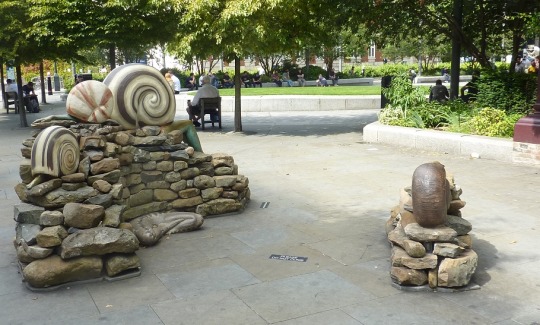


Sculpture In The City, London 2023
#Sculpture In The City 2023#Jocelyn McGregor#Earthing#Simeon Barclay#Pittu Pithu Pitoo#Jesse Pollock#The Granary
0 notes
Text

Inb4 i get blocked by bardown
1 note
·
View note
Text
i know it’s hard to avoid tsn completely, but it would be a good idea if we all stopped watching and interacting with bardown and and their youtube stuff seeing as one of their employees is about 1 tweet away from outright saying he wants all palestinians dead
#riley.txt#so all the videos they do with the leafs. all the ‘calling out teammates’ videos#bc jesse pollock is a genocidal zionist
1 note
·
View note
Text
no matter what the outcome is, i just need to say, from the bottom of my heart, fuck jesse pollock
32 notes
·
View notes
Text
please god, take away the leafs' bad vibes and horrors and give them to jesse pollock
53 notes
·
View notes
Text
(Mostly) Lost, but Not Forgotten: Omar Khayyam (1923) / A Lover’s Oath (1925)

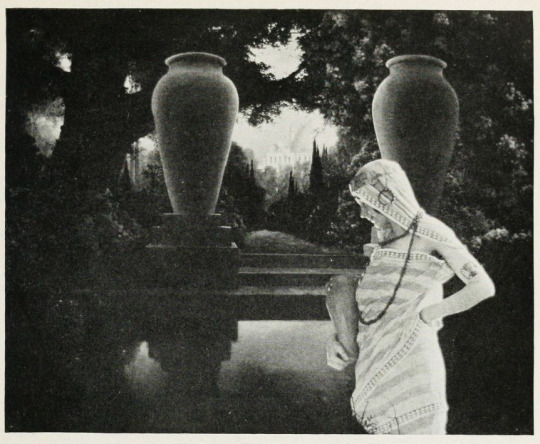
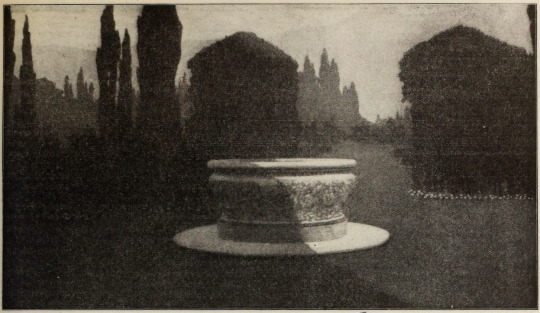

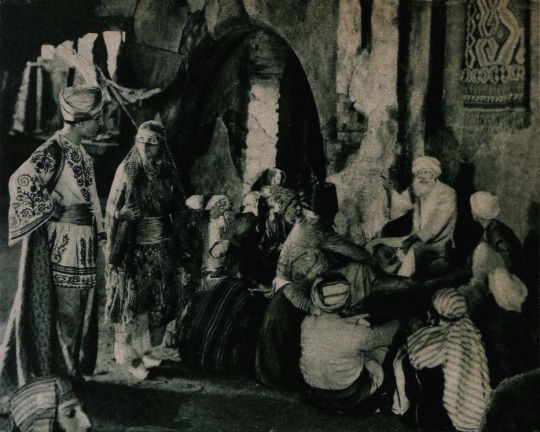
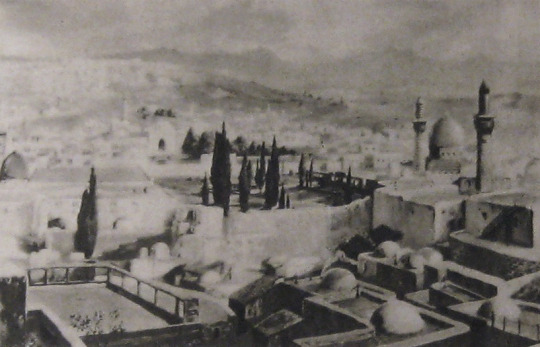

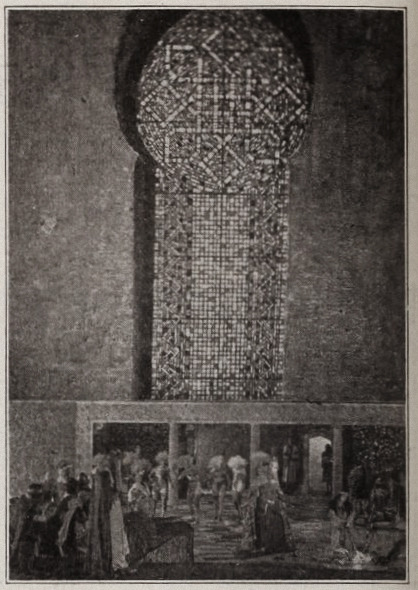
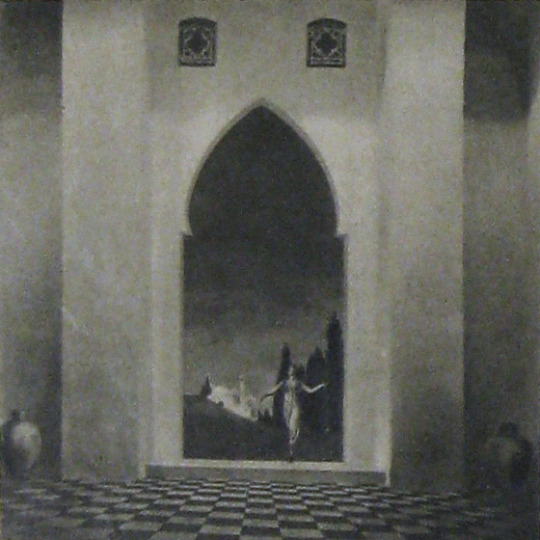


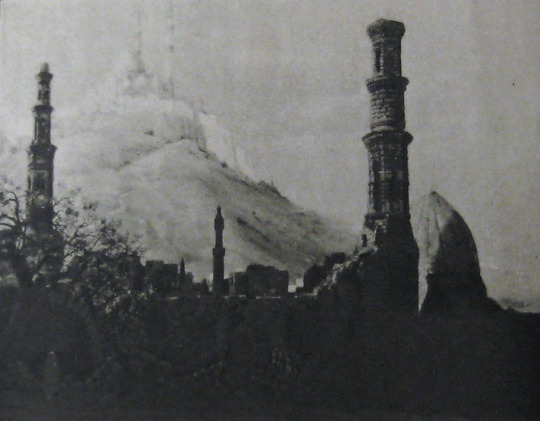
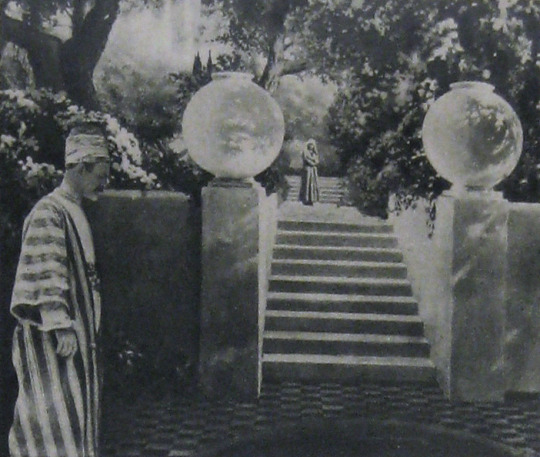
Alternate Titles: The Rubaiyat of Omar Khayyam, The Rubaiyat, Omar Khayyam, Omar
Direction: Ferdinand Pinney Earle; assisted by Walter Mayo
Scenario: Ferdinand P. Earle
Titles: Marion Ainslee, Ferdinand P. Earle (Omar), Louis Weadock (A Lover’s Oath)
Inspired by: The Rubaiyat of Omar Khayyam, as edited & translated by Edward FitzGerald
Production Manager: Winthrop Kelly
Camera: Georges Benoit
Still Photography: Edward S. Curtis
Special Photographic Effects: Ferdinand P. Earle, Gordon Bishop Pollock
Composer: Charles Wakefield Cadman
Editors: Arthur D. Ripley (The Rubaiyat of Omar Khayyam version), Ethel Davey & Ferdinand P. Earle (Omar / Omar Khayyam, the Director’s cut of 1922), Milton Sills (A Lover’s Oath)
Scenic Artists: Frank E. Berier, Xavier Muchado, Anthony Vecchio, Paul Detlefsen, Flora Smith, Jean Little Cyr, Robert Sterner, Ralph Willis
Character Designer: Louis Hels
Choreography: Ramon Novarro (credited as Ramon Samaniegos)
Technical Advisors: Prince Raphael Emmanuel, Reverend Allan Moore, Captain Dudley S. Corlette, & Captain Montlock or Mortlock
Studio: Ferdinand P. Earle Productions / The Rubaiyat, Inc. (Production) & Eastern Film Corporation (Distribution, Omar), Astor Distribution Corporation [States Rights market] (Distribution, A Lover’s Oath)
Performers: Frederick Warde, Edwin Stevens, Hedwiga Reicher, Mariska Aldrich, Paul Weigel, Robert Anderson, Arthur Carewe, Jesse Weldon, Snitz Edwards, Warren Rogers, Ramon Novarro (originally credited as Ramon Samaniegos), Big Jim Marcus, Kathleen Key, Charles A. Post, Phillippe de Lacy, Ferdinand Pinney Earle
Premiere(s): Omar cut: April 1922 The Ambassador Theatre, New York, NY (Preview Screening), 12 October 1923, Loew’s New York, New York, NY (Preview Screening), 2 February 1923, Hoyt’s Theatre, Sydney, Australia (Initial Release)
Status: Presumed lost, save for one 30 second fragment preserved by the Academy Film Archive, and a 2.5 minute fragment preserved by a private collector (Old Films & Stuff)
Length: Omar Khayyam: 8 reels , 76 minutes; A Lover’s Oath: 6 reels, 5,845 feet (though once listed with a runtime of 76 minutes, which doesn’t line up with the stated length of this cut)
Synopsis (synthesized from magazine summaries of the plot):
Omar Khayyam:
Set in 12th century Persia, the story begins with a preface in the youth of Omar Khayyam (Warde). Omar and his friends, Nizam (Weigel) and Hassan (Stevens), make a pact that whichever one of them becomes a success in life first will help out the others. In adulthood, Nizam has become a potentate and has given Omar a position so that he may continue his studies in mathematics and astronomy. Hassan, however, has grown into quite the villain. When he is expelled from the kingdom, he plots to kidnap Shireen (Key), the sheik’s daughter. Shireen is in love with Ali (Novarro). In the end it’s Hassan’s wife (Reicher) who slays the villain then kills herself.
A Lover’s Oath:
The daughter of a sheik, Shireen (Key), is in love with Ali (Novarro), the son of the ruler of a neighboring kingdom. Hassan covets Shireen and plots to kidnap her. Hassan is foiled by his wife. [The Sills’ edit places Ali and Shireen as protagonists, but there was little to no re-shooting done (absolutely none with Key or Novarro). So, most critics note how odd it is that all Ali does in the film is pitch woo, and does not save Shireen himself. This obviously wouldn’t have been an issue in the earlier cut, where Ali is a supporting character, often not even named in summaries and news items. Additional note: Post’s credit changes from “Vizier” to “Commander of the Faithful”]
Additional sequence(s) featured in the film (but I’m not sure where they fit in the continuity):
Celestial sequences featuring stars and planets moving through the cosmos
Angels spinning in a cyclone up to the heavens
A Potters’ shop sequence (relevant to a specific section of the poems)
Harem dance sequence choreographed by Novarro
Locations: palace gardens, street and marketplace scenes, ancient ruins


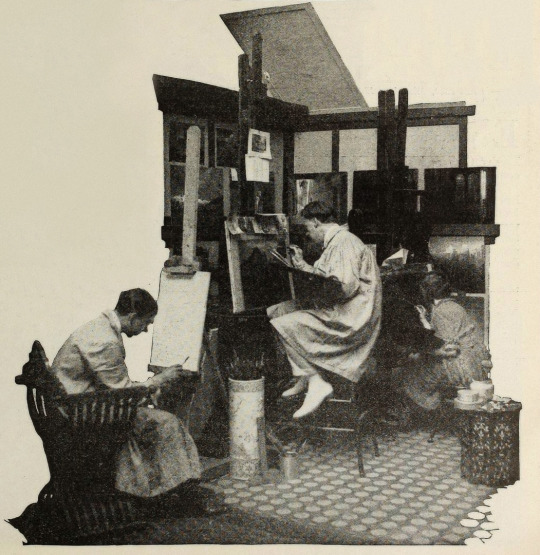


Points of Interest:
“The screen has been described as the last word in realism, but why confine it there? It can also be the last word in imaginative expression.”
Ferdinand P. Earle as quoted in Exhibitors Trade Review, 4 March 1922
The Rubaiyat of Omar Khayyam was a massive best seller. Ferdinand Pinney Earle was a classically trained artist who studied under William-Adolphe Bougueraeu and James McNeill Whistler in his youth. He also had years of experience creating art backgrounds, matte paintings, and art titles for films. Charles Wakefield Cadman was an accomplished composer of songs, operas, and operettas. Georges Benoit and Gordon Pollock were experienced photographic technicians. Edward S. Curtis was a widely renowned still photographer. Ramon Novarro was a name nobody knew yet—but they would soon enough.
When Earle chose The Rubaiyat as the source material for his directorial debut and collected such skilled collaborators, it seemed likely that the resulting film would be a landmark in the art of American cinema. Quite a few people who saw Earle’s Rubaiyat truly thought it would be:
William E. Wing writing for Camera, 9 September 1922, wrote:
“Mr. Earle…came from the world of brush and canvass, to spread his art upon the greater screen. He created a new Rubaiyat with such spiritual colors, that they swayed.”
…
“It has been my fortune to see some of the most wonderful sets that this Old Earth possesses, but I may truly say that none seized me more suddenly, or broke with greater, sudden inspiration upon the view and the brain, than some of Ferdinand Earle’s backgrounds, in his Rubaiyat.
“His vision and inspired art seem to promise something bigger and better for the future screen.”
As quoted in an ad in Film Year Book, 1923:
“Ferdinand Earle has set a new standard of production to live up to.”
Rex Ingram
“Fifty years ahead of the time.”
Marshall Neilan
The film was also listed among Fritz Lang’s Siegfried, Chaplin’s Gold Rush, Fairbanks’ Don Q, Lon Chaney’s Phantom of the Opera and The Unholy Three, and Erich Von Stroheim’s Merry Widow by the National Board of Review as an exceptional film of 1925.
So why don’t we all know about this film? (Spoiler: it’s not just because it’s lost!)
The short answer is that multiple dubious legal challenges arose that prevented Omar’s general release in the US. The long answer follows BELOW THE JUMP!
Earle began the project in earnest in 1919. Committing The Rubaiyat to film was an ambitious undertaking for a first-time director and Earle was striking out at a time when the American film industry was developing an inferiority complex about the level of artistry in their creative output. Earle was one of a number of artists in the film colony who were going independent of the emergent studio system for greater protections of their creative freedoms.
In their adaptation of The Rubaiyat of Omar Khayyam, Earle and Co. hoped to develop new and perfect existing techniques for incorporating live-action performers with paintings and expand the idea of what could be accomplished with photographic effects in filmmaking. The Rubaiyat was an inspired choice. It’s not a narrative, but a collection of poetry. This gave Earle the opportunity to intersperse fantastical, poetic sequences throughout a story set in the lifetime of Omar Khayyam, the credited writer of the poems. In addition to the fantastic, Earle’s team would recreate 12th century Persia for the screen.
Earle was convinced that if his methods were perfected, it wouldn’t matter when or where a scene was set, it would not just be possible but practical to put on film. For The Rubaiyat, the majority of shooting was done against black velvet and various matte photography and multiple exposure techniques were employed to bring a setting 800+ years in the past and 1000s of miles removed to life before a camera in a cottage in Los Angeles.
Note: If you’d like to learn a bit more about how these effects were executed at the time, see the first installment of How’d They Do That.
Unfortunately, the few surviving minutes don’t feature much of this special photography, but what does survive looks exquisite:

see all gifs here
Earle, knowing that traditional stills could not be taken while filming, brought in Edward S. Curtis. Curtis developed techniques in still photography to replicate the look of the photographic effects used for the film. So, even though the film hasn’t survived, we have some pretty great looking representations of some of the 1000s of missing feet of the film.
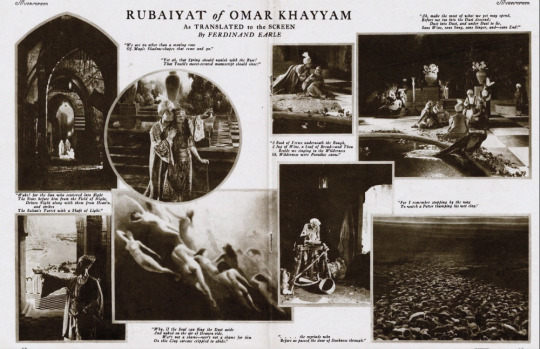
Nearly a year before Curtis joined the crew, Earle began collaboration with composer Charles Wakefield Cadman. In another bold creative move, Cadman and Earle worked closely before principal photography began so that the score could inform the construction and rhythm of the film and vice versa.
By the end of 1921 the film was complete. After roughly 9 months and the creation of over 500 paintings, The Rubaiyat was almost ready to meet its public. However, the investors in The Rubaiyat, Inc., the corporation formed by Earle to produce the film, objected to the ample reference to wine drinking (a comical objection if you’ve read the poems) and wanted the roles of the young lovers (played by as yet unknown Ramon Novarro and Kathleen Key) to be expanded. The dispute with Earle became so heated that the financiers absconded with the bulk of the film to New York. Earle filed suit against them in December to prevent them from screening their butchered and incomplete cut. Cadman supported Earle by withholding the use of his score for the film.
Later, Eastern Film Corp. brokered a settlement between the two parties, where Earle would get final cut of the film and Eastern would handle its release. Earle and Eastern agreed to change the title from The Rubaiyat of Omar Khayyam to simply Omar. Omar had its first official preview in New York City. It was tentatively announced that the film would have a wide release in the autumn.
However, before that autumn, director Norman Dawn launched a dubious patent-infringement suit against Earle and others. Dawn claimed that he owned the sole right to use multiple exposures, glass painting for single exposure, and other techniques that involved combining live action with paintings. All the cited techniques had been widespread in the film industry for a decade already and eventually and expectedly Dawn lost the suit. Despite Earle’s victory, the suit effectively put the kibosh on Omar’s release in the US.
Earle moved on to other projects that didn’t come to fruition, like a Theda Bara film and a frankly amazing sounding collaboration with Cadman to craft a silent-film opera of Faust. Omar did finally get a release, albeit only in Australia. Australian news outlets praised the film as highly as those few lucky attendees of the American preview screenings did. The narrative was described as not especially original, but that it was good enough in view of the film’s artistry and its imaginative “visual phenomena” and the precision of its technical achievement.
One reviewer for The Register, Adelaide, SA, wrote:
“It seems almost an impossibility to make a connected story out of the short verse of the Persian of old, yet the producer of this classic of the screen… has succeeded in providing an entertainment that would scarcely have been considered possible. From first to last the story grips with its very dramatic intensity.”
While Omar’s American release was still in limbo, “Ramon Samaniegos” made a huge impression in Rex Ingram’s Prisoner of Zenda (1922, extant) and Scaramouche (1923, extant) and took on a new name: Ramon Novarro. Excitement was mounting for Novarro’s next big role as the lead in the epic Ben-Hur (1925, extant) and the Omar project was re-vivified.

A new company, Astor Distribution Corp., was formed and purchased the distribution rights to Omar. Astor hired actor (note, not an editor) Milton Sills to re-cut the film to make Novarro and Key more prominent. The company also re-wrote the intertitles, reduced the films runtime by more than ten minutes, and renamed the film A Lover’s Oath. Earle had moved on by this point, vowing to never direct again. In fact, Earle was indirectly working with Novarro and Key again at the time, as an art director on Ben-Hur!
Despite Omar’s seemingly auspicious start in 1920, it was only released in the US on the states rights market as a cash-in on the success of one of its actors in a re-cut form five years later.
That said, A Lover’s Oath still received some good reviews from those who did manage to see it. Most of the negative criticism went to the story, intertitles, and Sills’ editing.
What kind of legacy could/should Omar have had? I’m obviously limited in my speculation by the fact that the film is lost, but there are a few key facts about the film’s production, release, and timing to consider.
The production budget was stated to be $174,735. That is equivalent to $3,246,994.83 in 2024 dollars. That is a lot of money, but since the production was years long and Omar was a period film set in a remote locale and features fantastical special effects sequences, it’s a modest budget. For contemporary perspective, Robin Hood (1922, extant) cost just under a million dollars to produce and Thief of Bagdad (1924, extant) cost over a million. For a film similarly steeped in spectacle to have nearly 1/10th of the budget is really very noteworthy. And, perhaps if the film had ever had a proper release in the US—in Earle’s intended form (that is to say, not the Sills cut)—Omar may have made as big of a splash as other epics.
It’s worth noting here however that there are a number of instances in contemporary trade and fan magazines where journalists off-handedly make this filmmaking experiment about undermining union workers. Essentially implying that that value of Earle’s method would be to continue production when unionized workers were striking. I’m sure that that would absolutely be a primary thought for studio heads, but it certainly wasn’t Earle’s motivation. Often when Earle talks about the method, he focuses on being able to film things that were previously impossible or impracticable to film. Driving down filming costs from Earle’s perspective was more about highlighting the artistry of his own specialty in lieu of other, more demanding and time-consuming approaches, like location shooting.
This divide between artists and studio decision makers is still at issue in the American film and television industry. Studio heads with billion dollar salaries constantly try to subvert unions of skilled professionals by pursuing (as yet) non-unionized labor. The technical developments of the past century have made Earle’s approach easier to implement. However, just because you don’t have to do quite as much math, or time an actor’s movements to a metronome, does not mean that filming a combination of painted/animated and live-action elements does not involve skilled labor.
VFX artists and animators are underappreciated and underpaid. In every new movie or TV show you watch there’s scads of VFX work done even in films/shows that have mundane, realistic settings. So, if you love a film or TV show, take the effort to appreciate the work of the humans who made it, even if their work was so good you didn’t notice it was done. And, if you’ve somehow read this far, and are so out of the loop about modern filmmaking, Disney’s “live-action” remakes are animated films, but they’ve just finagled ways to circumvent unions and low-key delegitimize the skilled labor of VFX artists and animators in the eyes of the viewing public. Don’t fall for it.
VFX workers in North America have a union under IATSE, but it’s still developing as a union and Marvel & Disney workers only voted to unionize in the autumn of 2023. The Animation Guild (TAG), also under the IATSE umbrella, has a longer history, but it’s been growing rapidly in the past year. A strike might be upcoming this year for TAG, so keep an eye out and remember to support striking workers and don’t cross picket lines, be they physical or digital!
Speaking of artistry over cost-cutting, I began this post with a mention that in the early 1920s, the American film industry was developing an inferiority complex in regard to its own artistry. This was in comparison to the European industries, Germany’s being the largest at the time. It’s frustrating to look back at this period and see acceptance of the opinion that American filmmakers weren’t bringing art to film. While yes, the emergent studio system was highly capitalistic and commercial, that does not mean the American industry was devoid of home-grown artists.
United Artists was formed in 1919 by Douglas Fairbanks, Charlie Chaplin, Mary Pickford, and D.W. Griffith precisely because studios were holding them back from investing in their art—within the same year that Earle began his Omar project. While salaries and unforgiving production schedules were also paramount concerns in the filmmakers going independent, a primary impetus was that production/distribution heads exhibited too much control over what the artists were trying to create.
Fairbanks was quickly expanding his repertoire in a more classical and fantastic direction. Cecil B. DeMille made his first in a long and very successful string of ancient epics. And the foreign-born children of the American film industry, Charlie Chaplin, Rex Ingram, and Nazimova, were poppin’ off! Chaplin was redefining comedic filmmaking. Ingram was redefining epics. Nazimova independently produced what is often regarded as America’s first art film, Salome (1923, extant), a film designed by Natacha Rambova, who was *gasp* American. Earle and his brother, William, had ambitious artistic visions of what could be done in the American industry and they also had to self-produce to get their work done.
Meanwhile, studio heads, instead of investing in the artists they already had contracts with, tried to poach talent from Europe with mixed success (in this period, see: Ernst Lubitsch, F.W. Murnau, Benjamin Christensen, Mauritz Stiller, Victor Sjöström, and so on). I’m in no way saying it was the wrong call to sign these artists, but all of these filmmakers, even if they found success in America, had stories of being hired to inject the style and artistry that they developed in Europe into American cinema, and then had their plans shot down or cut down to a shadow of their creative vision. Even Stiller, who tragically died before he had the opportunity to establish himself in the US, faced this on his first American film, The Temptress (1926, extant), on which he was replaced. Essentially, the studio heads’ actions were all hot air and spite for the filmmakers who’d gone independent.

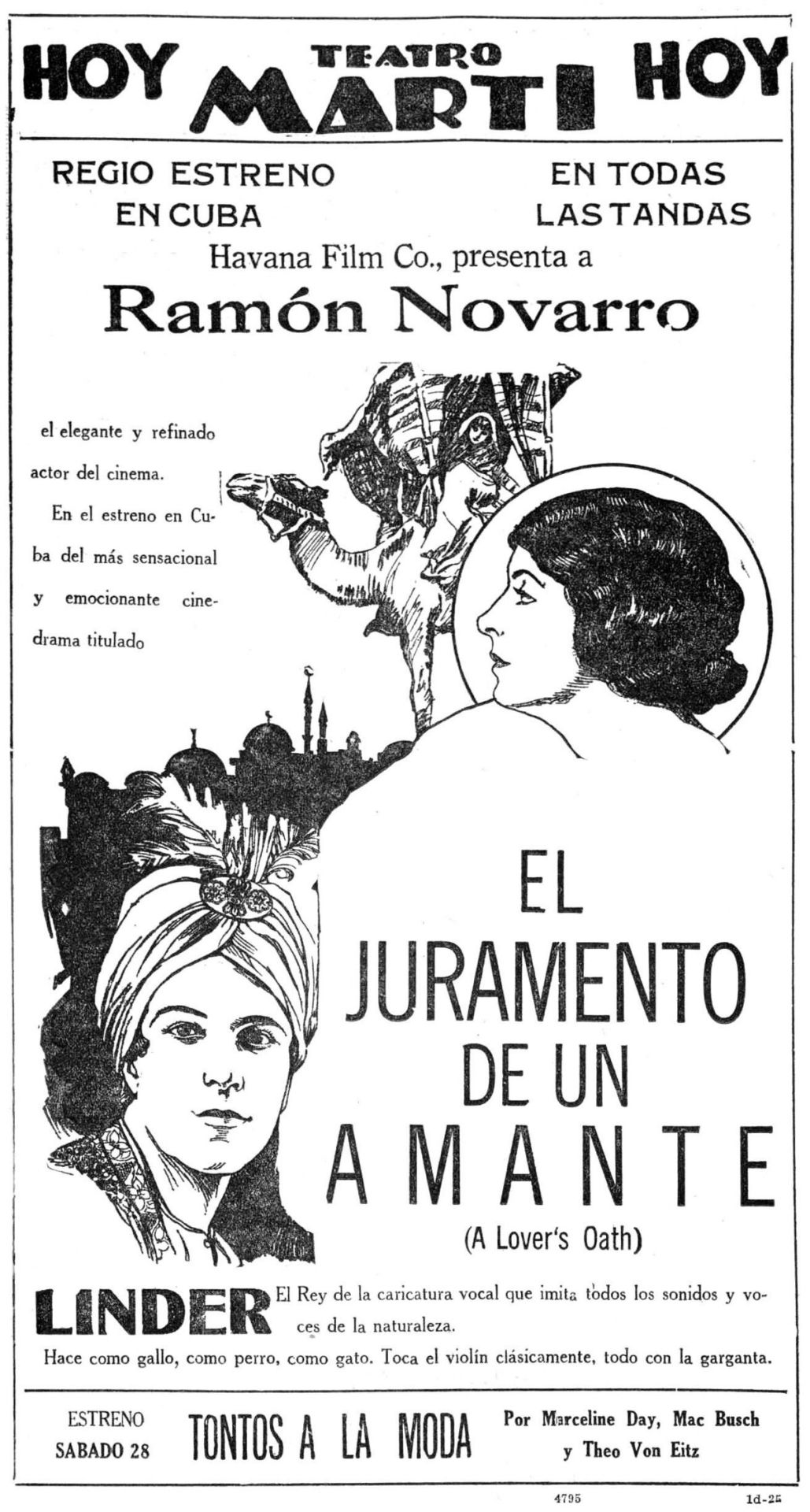
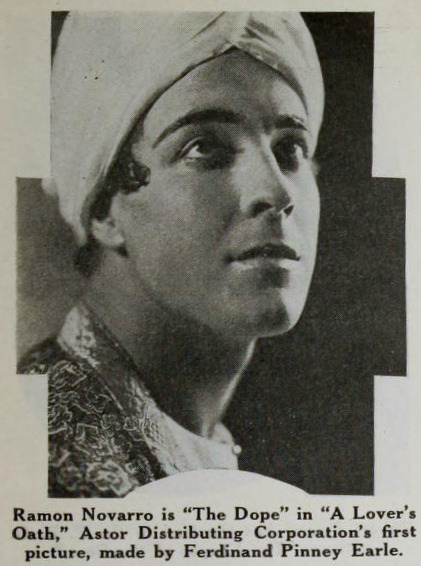
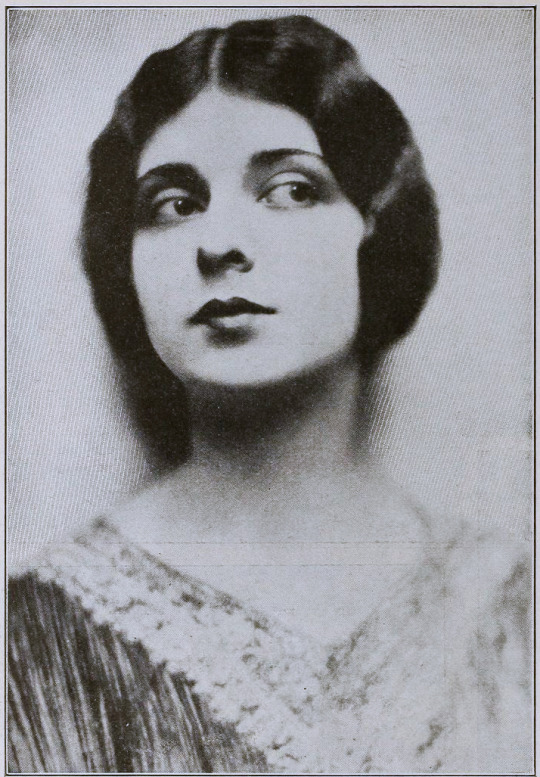
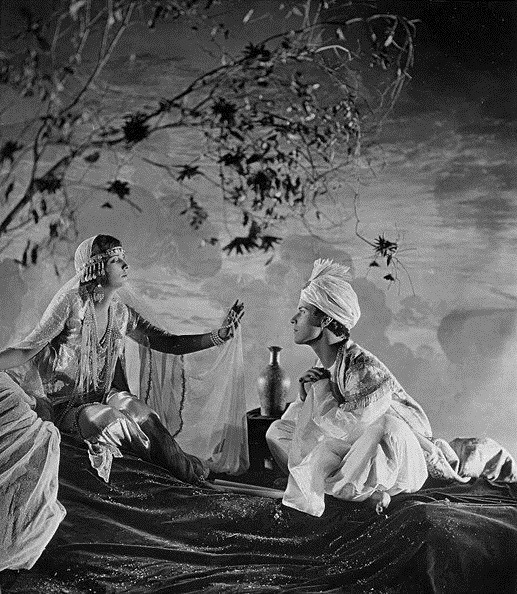
Finally I would like to highlight Ferdinand Earle’s statement to the industry, which he penned for from Camera in 14 January 1922, when his financial backers kidnapped his film to re-edit it on their terms:
MAGNA CHARTA
Until screen authors and producers obtain a charter specifying and guaranteeing their privileges and rights, the great slaughter of unprotected motion picture dramas will go merrily on.
Some of us who are half artists and half fighters and who are ready to expend ninety per cent of our energy in order to win the freedom to devote the remaining ten per cent to creative work on the screen, manage to bring to birth a piteous, half-starved art progeny.
The creative artist today labors without the stimulus of a public eager for his product, labors without the artistic momentum that fires the artist’s imagination and spurs his efforts as in any great art era.
Nowadays the taint of commercialism infects the seven arts, and the art pioneer meets with constant petty worries and handicaps.
Only once in a blue moon, in this matter-of-fact, dollar-wise age can the believer in better pictures hope to participate in a truely [sic] artistic treat.
In the seven years I have devoted to the screen, I have witnessed many splendid photodramas ruined by intruding upstarts and stubborn imbeciles. And I determined not to launch the production of my Opus No. 1 until I had adequately protected myself against all the usual evils of the way, especially as I was to make an entirely new type of picture.
In order that my film verison [sic] of the Rubaiyat of Omar Khayyam might be produced under ideal conditions and safeguarded from intolerable interferences and outside worries, I entered into a contract with the Rubaiyat, Inc., that made me not only president of the corporation and on the board of directors, but which set forth that I was to be author, production manager, director, cutter and film editor as well as art director, and that no charge could be made against the production without my written consent, and that my word was to be final on all matters of production. The late George Loane Tucker helped my attorney word the contract, which read like a splendid document.
Alas, I am now told that only by keeping title to a production until it is declared by yourself to be completed is it safe for a scenario writer, an actor or a director, who is supposedly making his own productions, to contract with a corporation; otherwise he is merely the servant of that corporation, subject at any moment to discharge, with the dubious redress of a suit for damages that can with difficulty be estimated and proven.
Can there be any hope of better pictures as long as contracts and copyrights are no protection against financial brigands and bullies?
We have scarcely emerged from barbarism, for contracts, solemnly drawn up between human beings, in which the purposes are set forth in the King’s plainest English, serve only as hurdles over which justice-mocking financiers and their nimble attorneys travel with impunity, riding rough shod over the author or artist who cannot support a legal army to defend his rights. The phrase is passed about that no contract is invioliable [sic]—and yet we think we have reached a state of civilization!
The suit begun by my attorneys in the federal courts to prevent the present hashed and incomplete version of my story from being released and exhibited, may be of interest to screen writers. For the whole struggle revolves not in the slightest degree around the sanctity of the contract, but centers around the federal copyright of my story which I never transferred in writing otherwise, and which is being brazenly ignored.
Imagine my production without pictorial titles: and imagine “The Rubaiyat” with a spoken title as follows, “That bird is getting to talk too much!”—beside some of the immortal quatrains of Fitzgerald!
One weapon, fortunately, remains for the militant art creator, when all is gone save his dignity and his sense of humor; and that is the rapier blade of ridicule, that can send lumbering to his retreat the most brutal and elephant-hided lord of finance.
How edifying—the tableau of the man of millions playing legal pranks upon men such as Charles Wakefield Cadman, Edward S. Curtis and myself and others who were associated in the bloody venture of picturizing the Rubaiyat! It has been gratifying to find the press of the whole country ready to champion the artist’s cause.
When the artist forges his plowshare into a sword, so to speak, he does not always put up a mean fight.
What publisher would dare to rewrite a sonnet of John Keats or alter one chord of a Chopin ballade?
Creative art of a high order will become possible on the screen only when the rights of established, independent screen producers, such as Rex Ingram and Maurice Tourneur, are no longer interferred with and their work no longer mutilated or changed or added to by vandal hands. And art dramas, conceived and executed by masters of screen craft, cannot be turned out like sausages made by factory hands. A flavor of individuality and distinction of style cannot be preserved in machine-made melodramas—a drama that is passed from hand to hand and concocted by patchworkers and tinkerers.
A thousand times no! For it will always be cousin to the sausage, and be like all other—sausages.
The scenes of a master’s drama may have a subtle pictorial continuity and a power of suggestion quite like a melody that is lost when just one note is changed. And the public is the only test of what is eternally true or false. What right have two or three people to deprive millions of art lovers of enjoying an artist’s creation as it emerged from his workshop?
“The Rubaiyat” was my first picture and produced in spite of continual and infernal interferences. It has taught me several sad lessons, which I have endeavored in the above paragraphs to pass on to some of my fellow sufferers. It is the hope that I am fighting, to a certain extent, their battle that has given me the courage to continue, and that has prompted me to write this article. May such hubbubs eventually teach or inforce a decent regard for the rights of authors and directors and tend to make the existence of screen artisans more secure and soothing to the nerves.
FERDINAND EARLE.
---
☕Appreciate my work? Buy me a coffee! ☕
Transcribed Sources & Annotations over on the WMM Blog!
See the Timeline for Ferdinand P. Earle's Rubaiyat Adaptation
#1920s#1923#1925#omar khayyam#ferdinand pinney earle#ramon novarro#independent film#american film#silent cinema#silent era#silent film#classic cinema#classic movies#classic film#film history#history#Charles Wakefield Cadman#cinematography#The Rubaiyat#cinema#film#lost film
41 notes
·
View notes
Text
from the bottom of my heart, i hope jesse pollock is having the worst day🫶
20 notes
·
View notes
Text

Thomas Hart Benton
Jesse James, from the Missouri State Capitol Mural Series, 1936 - Lithograph on Rives paper with GCM watermark, signed in pencil, from the edition of 100. - 16 1/4 x 21 7/8in
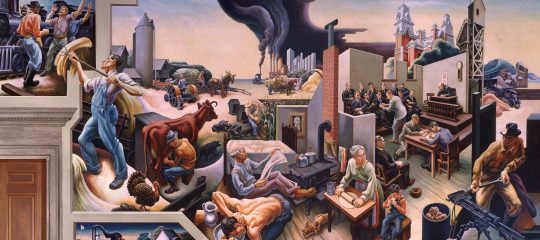
Thomas Hart Benton’s "A Social History of the State of Missouri". The mural, which is located in the House Lounge, has been open for public viewing since its completion in 1936.

Thomas Hart Benton with his painting Persephone via Kansas City Public Library

Thomas Hart Benton - Persephone
Thomas Hart Benton: 10 Facts About the American Painter
Thomas Hart Benton Was Born In A Small Missouri Town
Benton Attended The Art Institute Of Chicago And Académie Julien In Paris
He Was An Illustrator For The U.S. Navy During WWI - (Photograph Below)
He Was Jackson Pollock’s Teacher
He Was Head Of Kansas City Art Institute’s Painting Department
He Had Some Interesting Run-Ins With Magazines - (Explanation Below)
Benton’s Mural With Ku Klux Klan Members Still Sparks Controversy (Mural & Controversial Panel Below)
He Created A Mural For Missouri’s Capitol Building (Above the Fold)
Benton Was An Avid Harmonica Player
You Can Visit Thomas Hart Benson’s Home In Kansas City
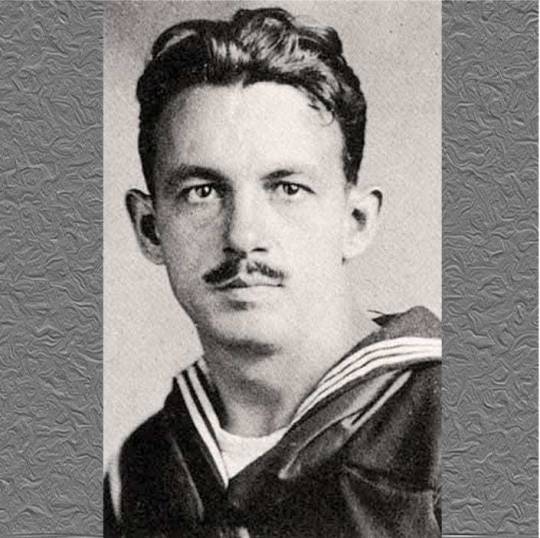
Thomas Hart Benton Service Photo

In 1934, Thomas Hart Benton was the first artist to ever appear on the cover of TIME Magazine.

Thomas Hart Benton - "Hollywood" - 1938
In 1937, Life Magazine commissioned a large painting from Benton on the subject of Hollywood, even paying for him to take a trip there over the summer of that year. His famous painting, Hollywood, was completed in 1938. When Life Magazine first saw the work, they immediately disapproved and wanted nothing to do with it, but the popularity of the work changed their tune and they included it in their spread about Hollywood.

A Social History of Indiana by Thomas Hart Benton, 1933, via The University of Indiana Bloomington
Thomas Hart Benton was commissioned to create a large mural for the state of Indiana in 1932 and it was presented at the 1933 Chicago World’s Fair. The mural, A Social History of Indiana, is made up of 22 large panels, spanning 250 ft in total, representing the state of Indiana.
The inclusion of the Ku Klux Klan brought heavy criticism when the mural was exhibited at the World’s Fair, but this didn’t stop the mural from being one of the most popular exhibits.
Cultural Panel 10 ("Parks, the Circus, the Klan, the Press") depicts a vivid, startling image of a Ku Klux Klan rally and a burning cross. The Klan had ruled Indiana politics during the 1920s—much to the embarrassment of progressives like Col. Lieber who preferred to bury the state's sins of the past.
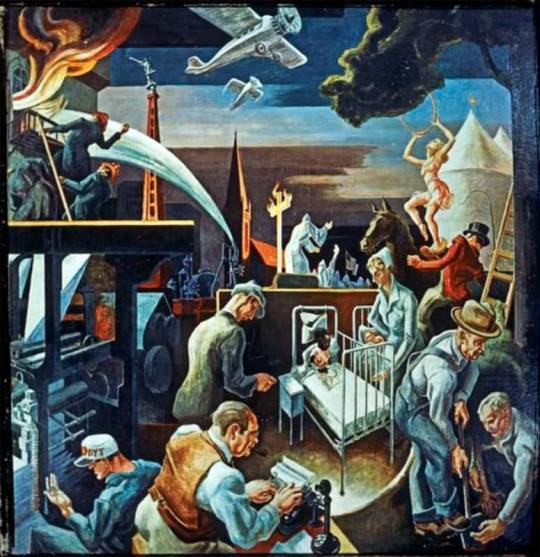
Cultural Panel #10 - The controversial panel, it is sad to see many of todays younger generation missing the point and simply looking to be offended by the past. (In 2017, students passed around a petition calling for its removal to which the university declared the lecture hall where it hangs will no longer be used for classes).

In Thomas Hart Benton’s Indiana mural, he attempts to point out the full history of Indiana, the good and the bad. Benton was not celebrating the Klu Klux Klan (KKK) in the mural, yet reminding the people of Indiana to recognize the past evils and how they were overcome.

Born: April 15, 1889 in Neosho, Missouri, son of Maecenus Eason Benton and Elizabeth Wise Benton
Died: January 19, 1975 in Kansas City, Missouri while finishing a large mural for the Country Music Hall of Fame in Nashville, Tennessee
#art#lithograph#Thomas Hart Benton#paintings#drawings#murals#artists#hollywood#time magazine#life magazine#social history#persephone#indiana#missouri#ku klux klan#jackson pollock#world's fair
40 notes
·
View notes
Text
The Jets losing hurts more when you remember how sad Jesse will be...
4 notes
·
View notes
Text
full list of biden letter 2:
Aaron Bay-Schuck
Aaron Sorkin
Adam & Jackie Sandler
Adam Goodman
Adam Levine
Alan Grubman
Alex Aja
Alex Edelman
Alexandra Shiva
Ali Wentworth
Alison Statter
Allan Loeb
Alona Tal
Amy Chozick
Amy Pascal
Amy Schumer
Amy Sherman Palladino
Andrew Singer
Andy Cohen
Angela Robinson
Anthony Russo
Antonio Campos
Ari Dayan
Ari Greenburg
Arik Kneller
Aron Coleite
Ashley Levinson
Asif Satchu
Aubrey Plaza
Barbara Hershey
Barry Diller
Barry Levinson
Barry Rosenstein
Beau Flynn
Behati Prinsloo
Bella Thorne
Ben Stiller
Ben Turner
Ben Winston
Ben Younger
Billy Crystal
Blair Kohan
Bob Odenkirk
Bobbi Brown
Bobby Kotick
Brad Falchuk
Brad Slater
Bradley Cooper
Bradley Fischer
Brett Gelman
Brian Grazer
Bridget Everett
Brooke Shields
Bruna Papandrea
Cameron Curtis
Casey Neistat
Cazzie David
Charles Roven
Chelsea Handler
Chloe Fineman
Chris Fischer
Chris Jericho
Chris Rock
Christian Carino
Cindi Berger
Claire Coffee
Colleen Camp
Constance Wu
Courteney Cox
Craig Silverstein
Dame Maureen Lipman
Dan Aloni
Dan Rosenweig
Dana Goldberg
Dana Klein
Daniel Palladino
Danielle Bernstein
Danny Cohen
Danny Strong
Daphne Kastner
David Alan Grier
David Baddiel
David Bernad
David Chang
David Ellison
David Geffen
David Gilmour &
David Goodman
David Joseph
David Kohan
David Lowery
David Oyelowo
David Schwimmer
Dawn Porter
Dean Cain
Deborah Lee Furness
Deborah Snyder
Debra Messing
Diane Von Furstenberg
Donny Deutsch
Doug Liman
Douglas Chabbott
Eddy Kitsis
Edgar Ramirez
Eli Roth
Elisabeth Shue
Elizabeth Himelstein
Embeth Davidtz
Emma Seligman
Emmanuelle Chriqui
Eric Andre
Erik Feig
Erin Foster
Eugene Levy
Evan Jonigkeit
Evan Winiker
Ewan McGregor
Francis Benhamou
Francis Lawrence
Fred Raskin
Gabe Turner
Gail Berman
Gal Gadot
Gary Barber
Gene Stupinski
Genevieve Angelson
Gideon Raff
Gina Gershon
Grant Singer
Greg Berlanti
Guy Nattiv
Guy Oseary
Gwyneth Paltrow
Hannah Fidell
Hannah Graf
Harlan Coben
Harold Brown
Harvey Keitel
Henrietta Conrad
Henry Winkler
Holland Taylor
Howard Gordon
Iain Morris
Imran Ahmed
Inbar Lavi
Isla Fisher
Jack Black
Jackie Sandler
Jake Graf
Jake Kasdan
James Brolin
James Corden
Jamie Ray Newman
Jaron Varsano
Jason Biggs & Jenny Mollen Biggs
Jason Blum
Jason Fuchs
Jason Reitman
Jason Segel
Jason Sudeikis
JD Lifshitz
Jeff Goldblum
Jeff Rake
Jen Joel
Jeremy Piven
Jerry Seinfeld
Jesse Itzler
Jesse Plemons
Jesse Sisgold
Jessica Biel
Jessica Elbaum
Jessica Seinfeld
Jill Littman
Jimmy Carr
Jody Gerson
Joe Hipps
Joe Quinn
Joe Russo
Joe Tippett
Joel Fields
Joey King
John Landgraf
John Slattery
Jon Bernthal
Jon Glickman
Jon Hamm
Jon Liebman
Jonathan Baruch
Jonathan Groff
Jonathan Marc Sherman
Jonathan Ross
Jonathan Steinberg
Jonathan Tisch
Jonathan Tropper
Jordan Peele
Josh Brolin
Josh Charles
Josh Goldstine
Josh Greenstein
Josh Grode
Judd Apatow
Judge Judy Sheindlin
Julia Garner
Julia Lester
Julianna Margulies
Julie Greenwald
Julie Rudd
Juliette Lewis
Justin Theroux
Justin Timberlake
Karen Pollock
Karlie Kloss
Katy Perry
Kelley Lynch
Kevin Kane
Kevin Zegers
Kirsten Dunst
Kitao Sakurai
KJ Steinberg
Kristen Schaal
Kristin Chenoweth
Lana Del Rey
Laura Dern
Laura Pradelska
Lauren Schuker Blum
Laurence Mark
Laurie David
Lea Michele
Lee Eisenberg
Leo Pearlman
Leslie Siebert
Liev Schreiber
Limor Gott
Lina Esco
Liz Garbus
Lizanne Rosenstein
Lizzie Tisch
Lorraine Schwartz
Lynn Harris
Lyor Cohen
Madonna
Mandana Dayani
Mara Buxbaum
Marc Webb
Marco Perego
Maria Dizzia
Mark Feuerstein
Mark Foster
Mark Scheinberg
Mark Shedletsky
Martin Short
Mary Elizabeth Winstead
Mathew Rosengart
Matt Lucas
Matt Miller
Matthew Bronfman
Matthew Hiltzik
Matthew Weiner
Matti Leshem
Max Mutchnik
Maya Lasry
Meaghan Oppenheimer
Melissa Zukerman
Michael Aloni
Michael Ellenberg
Michael Green
Michael Rapino
Michael Rappaport
Michael Weber
Michelle Williams
Mike Medavoy
Mila Kunis
Mimi Leder
Modi Wiczyk
Molly Shannon
Nancy Josephson
Natasha Leggero
Neil Blair
Neil Druckmann
Nicola Peltz
Nicole Avant
Nina Jacobson
Noa Kirel
Noa Tishby
Noah Oppenheim
Noah Schnapp
Noreena Hertz
Odeya Rush
Olivia Wilde
Oran Zegman
Orlando Bloom
Pasha Kovalev
Pattie LuPone
Paul & Julie Rudd
Paul Haas
Paul Pflug
Peter Traugott
Polly Sampson
Rachel Riley
Rafi Marmor
Ram Bergman
Raphael Margulies
Rebecca Angelo
Rebecca Mall
Regina Spektor
Reinaldo Marcus Green
Rich Statter
Richard Jenkins
Richard Kind
Rick Hoffman
Rick Rosen
Rita Ora
Rob Rinder
Robert Newman
Roger Birnbaum
Roger Green
Rosie O’Donnell
Ross Duffer
Ryan Feldman
Sacha Baron Cohen
Sam Levinson
Sam Trammell
Sara Foster
Sarah Baker
Sarah Bremner
Sarah Cooper
Sarah Paulson
Sarah Treem
Scott Braun
Scott Braun
Scott Neustadter
Scott Tenley
Sean Combs
Seth Meyers
Seth Oster
Shannon Watts
Shari Redstone
Sharon Jackson
Sharon Stone
Shauna Perlman
Shawn Levy
Sheila Nevins
Shira Haas
Simon Sebag Montefiore
Simon Tikhman
Skylar Astin
Stacey Snider
Stephen Fry
Steve Agee
Steve Rifkind
Sting & Trudie Styler
Susanna Felleman
Susie Arons
Taika Waititi
Thomas Kail
Tiffany Haddish
Todd Lieberman
Todd Moscowitz
Todd Waldman
Tom Freston
Tom Werner
Tomer Capone
Tracy Ann Oberman
Trudie Styler
Tyler James Williams
Tyler Perry
Vanessa Bayer
Veronica Grazer
Veronica Smiley
Whitney Wolfe Herd
Will Ferrell
Will Graham
Yamanieka Saunders
Yariv Milchan
Ynon Kreiz
Zack Snyder
Zoe Saldana
Zoey Deutch
Zosia Mamet
11 notes
·
View notes